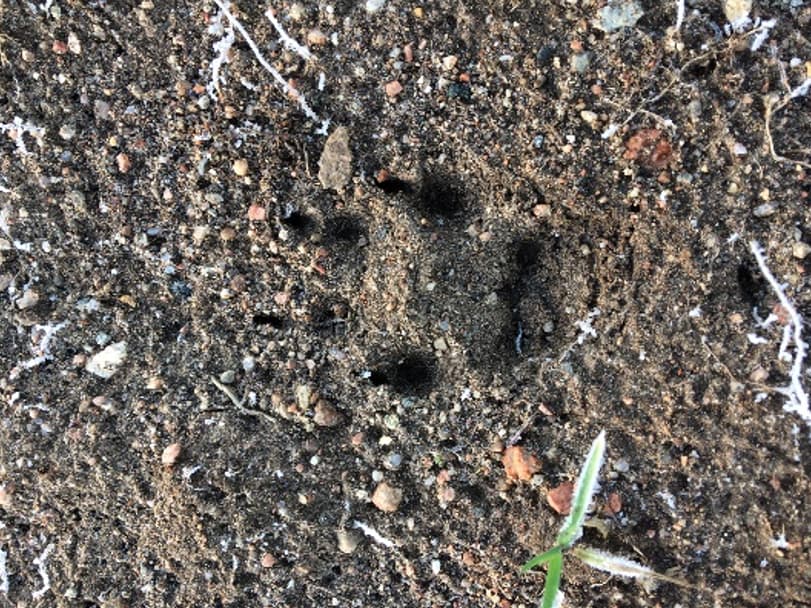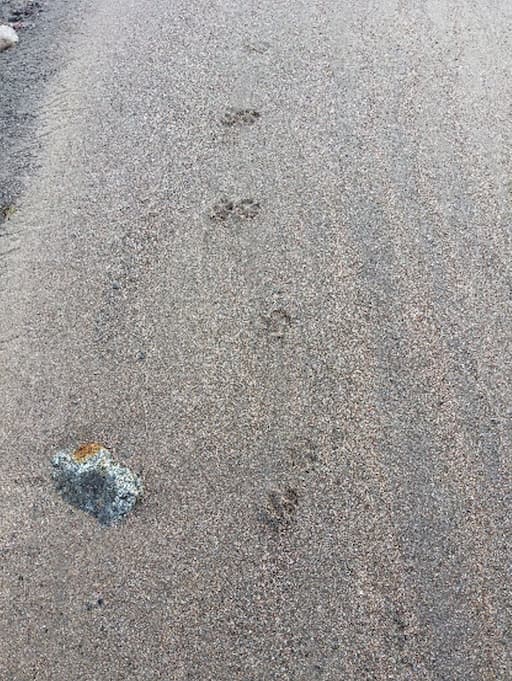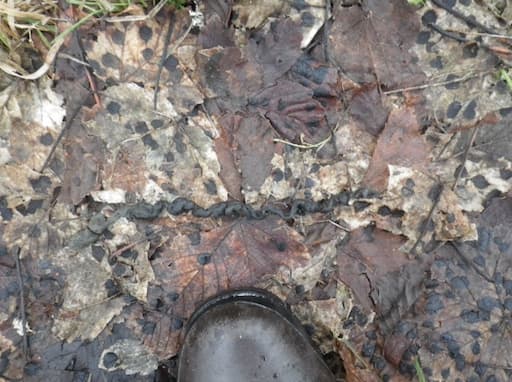Tracking the Animals of Bennachie
Why look for track and sign?
- Most mammals are secretive and hard to see.
- Tracks and signs (droppings, hair, feeding signs, holes, claw marks etc) indicate to us that a certain animal has used that site. We don’t need to see it. No sign doesn’t, however, mean no animals!
- Tracks and signs allow you to build up a picture of the what the animal has been doing – sleeping, feeding, running, scent marking.
- It’s the meeting place between science and storytelling – it involves using your imagination as well as collecting evidence and researching animals and their habitats.
What you need
- A ruler, either a 150mm ruler, or better still a folding 1m ruler.
- A notebook and pencil
- A camera or phone
- Hand lens (useful)
- Hand sanitizer
- Some old polythene bags or small plastic pots for collecting signs (chewed nuts, feathers etc).
- Some good track and sign ID books. Here is a short list of ones I’ve found helpful:
Mammal Tracks and Signs. A Guide to North American Species by Elbroch.M. Pub. Stackpole Books.
Despite being based on American mammals, this is the best book I have as a guide to track, gait and sign. Most mammals here have close cousins in the US or are indeed the same species. Highly recommended as both an introduction to the art of tracking as well as an ID guide to species.
Collins Field Guide, Mammals of Britain and Europe by MacDonald, D., Barrett, Pub. Collins. Good up-to-date field guide with some illustrated track and sign.
Tracks and Signs of Birds of Britain and Europe, an Identification Guide by Brown, R., Ferguson, J., Lees, D. Pub. Chrisopher Helm.
RSPB The Nature Tracker’s Handbook by Nick Baker; Pub. Bloomsbury Wildlife
What to do
On finding a track or sign:
-
First look very closely at the details you see. It’s best if the sun is on the opposite side of your track when you look at it. Be a nature detective and ask yourself useful questions such as ‘What sort of animal could leave a track of this size?’ Use your imagination.
-
Look at the number of toes, the size and shape of the palm pad, the space between the toe pads and palm pad. Look for dents made by claws.

A Fox Track Is there is more than one track? If so, what pattern do the tracks make? Was the animal bounding (like a rabbit), walking, trotting or galloping? How an animal moves is an important clue to identification.
If it’s a dropping, don’t pick it up but look closely to see if there are any bones or feathers. What shape is it? What size? Where is it placed? Take a photo so you can examine it magnified.
- Next stand back and look for a trail or the context (a river, a tussock of grass, woodland edge, muddy pool etc) in which you’ve found the tracks or sign. Are there more tracks or trails leading away from the hole? Other signs?
- Think about the whole environment around the hole, the snagged hair or tracks. Think about what you know about the area – cover, water, food resources, roads.
- Choose three animals that may have left the track or sign and gradually eliminate them until you are left with the most likely culprit.
- Lay your ruler next to the track or sign and take a photograph from various angles so you can look it up or send it to an expert for identification when you get home.
- It’s a really good idea to keep a notebook. You can print and paste in your photos, make sketches and record details of what you have found out about the track or signs. It’s one of the best ways to build up your skills!


This is part of the Becoming A Winter Nature Detective information.